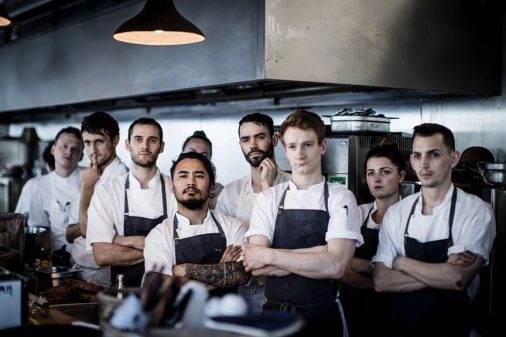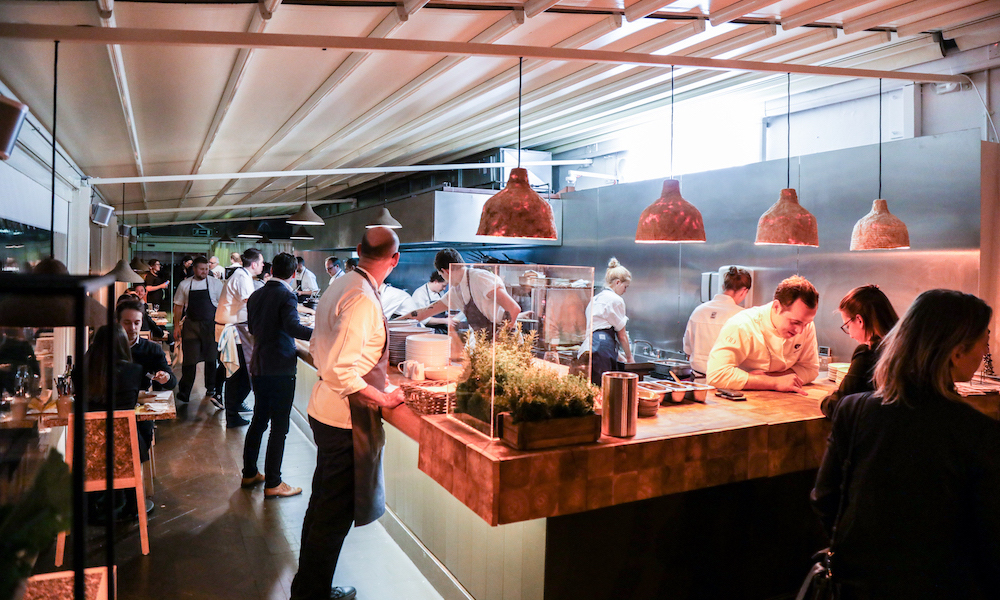
In 2017, renowned New York restaurant Blue Hill at Stone Barns brought their unique pop-up WastED to the roof of Selfridges, London. Partnering with local food producers and manufacturers, they sourced food that would usually have gone to ‘waste’ and created a fine dining pop-up with some of the UK’s leading chefs and culinary visionaries.
Lani and her team at MAST Chocolate London had the pleasure of creating a dish for the menu: ‘not-chocolate not-milk’ using cacao husk and whey (they two major by-products of the chocolate and dairy industries). This article was written by Lani about producing the dessert and was featured in Blue Hill’s producer journal on the WastED blog.


Purportedly, it was Socrates who said ‘Every action has its pleasures – and its price.’ He must have been speaking of the actions of cheese-and-chocolate-making, which create two of life’s greatest pleasures – but also generate excessive waste, at great potential cost to the environment.
A key intent of WastED, in Chef Dan’s words, is to broaden the definitions of food waste by talking about the waste generated by virtue of our everyday diets. While in our youth it was instilled in us that chocolate and cheese fell instead within the ‘sometimes’ food groups, upon reaching adulthood we’ve done a fine job of forgetting that. In the UK, we each consume an average of 6.5kg of chocolate and 12.1 kg of cheese every year.
With rising demand for these everyday pleasures, we’ve come up with increasingly creative uses for the by-products. A portion of the 160 million tonnes of whey produced each year is converted to biofuel; animal feed; used for nutritional and baker’s yeast; and for copious culinary uses – but there’s still a lot going to waste.
With chocolate – I won’t even start on the huge volume of cacao fruit, pulp, and pods that are discarded to obtain the prized beans inside – roughly 25% of the cacao is either deemed unsuitable for roasting or removed post-roast in the form of husk (the outer shell of the bean).
As small-batch craft chocolate makers, we often roast 60kg of cacao per day, generating around 15kg of ‘waste’. As one of the smallest chocolate makers in Europe, the husk generated by larger producers is unfathomable.
Cacao husk itself, while fibrous and tannic, retains a significant amount of flavor. Deep, rich cocoa notes pair with fruit, ferment, and notes specific to origin. Peruvian husk and nib hold jackfruit sourness, while those beans grown in the Dominican Republic have a distinct note of blueberry (or, depending upon the seasonal climatic conditions, banana). The notion of terroir in chocolate is as pronounced as in coffee or wine – it seems such a shame to dispose of up to 25% of the cacao.
My team had already been experimenting with brewing cacao husk with coffee methods – cold brewing, siphon brewing – you name it. Discussing our experiments with Blue Hill’s Culinary Director Adam Kaye, musings of chocolate milk surfaced, brewed entirely with waste.
After an introduction to Bill from Kappacasein Dairy, we got to work creating (not) chocolate (not) milk. Using a milk by-product (whey) and a chocolate by-product (cacao husk), we paired them together using cold brew coffee steeping methods.
After 24 hours, the whey is infused with a rich, toasty, malty flavor, reminiscent of malted milk and 100% chocolate. The solids are filtered out, leaving a smooth and creamy base, to which we added a little cane sugar and vanilla. When the Blue Hill team tried our experiments, they were reminded of the ice cream floats of their youth: malt, chocolate, vanilla – so we turned half into a sorbet base, and ever-so-slightly carbonated the remainder with creamy nitrogen. Paired together, they are served as a (not) chocolate (not) milk ice-cream float.